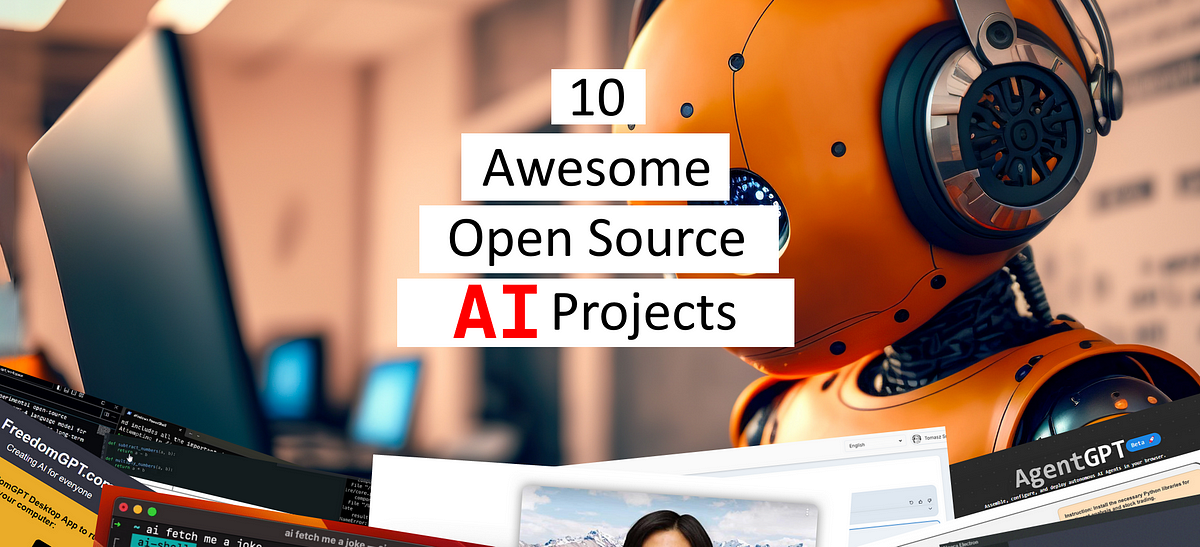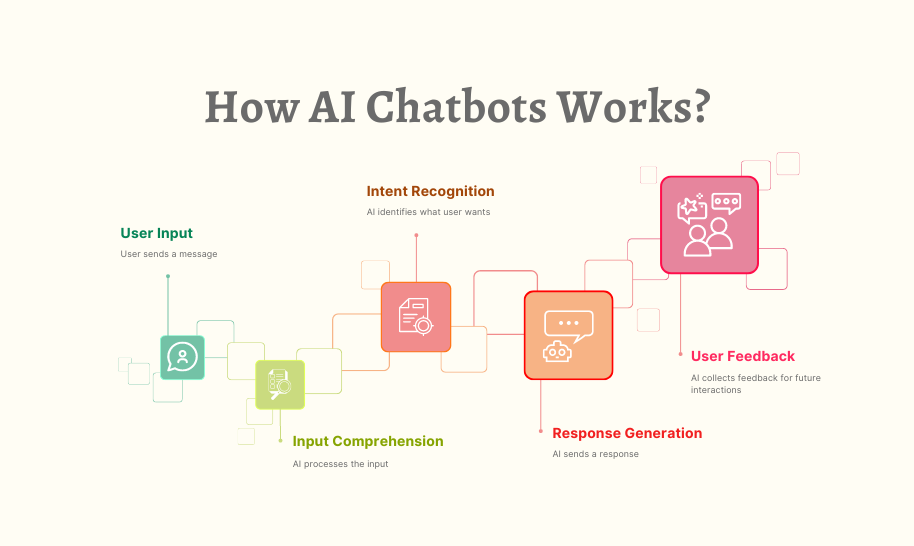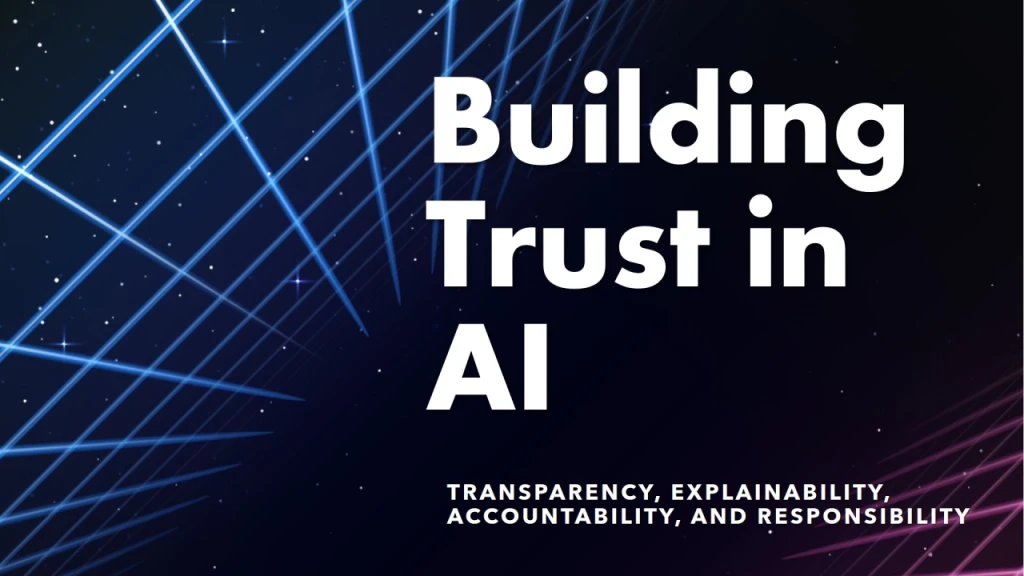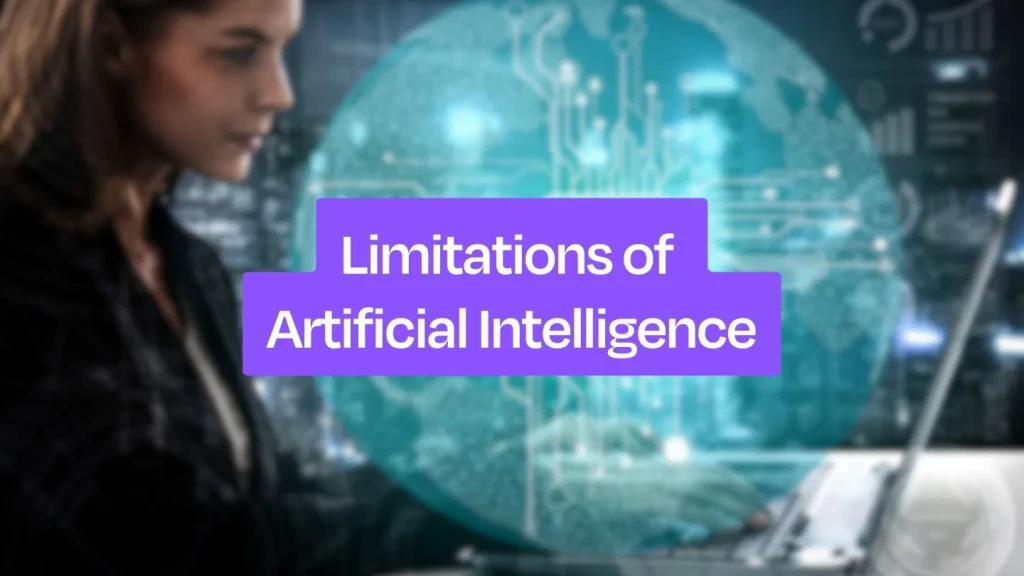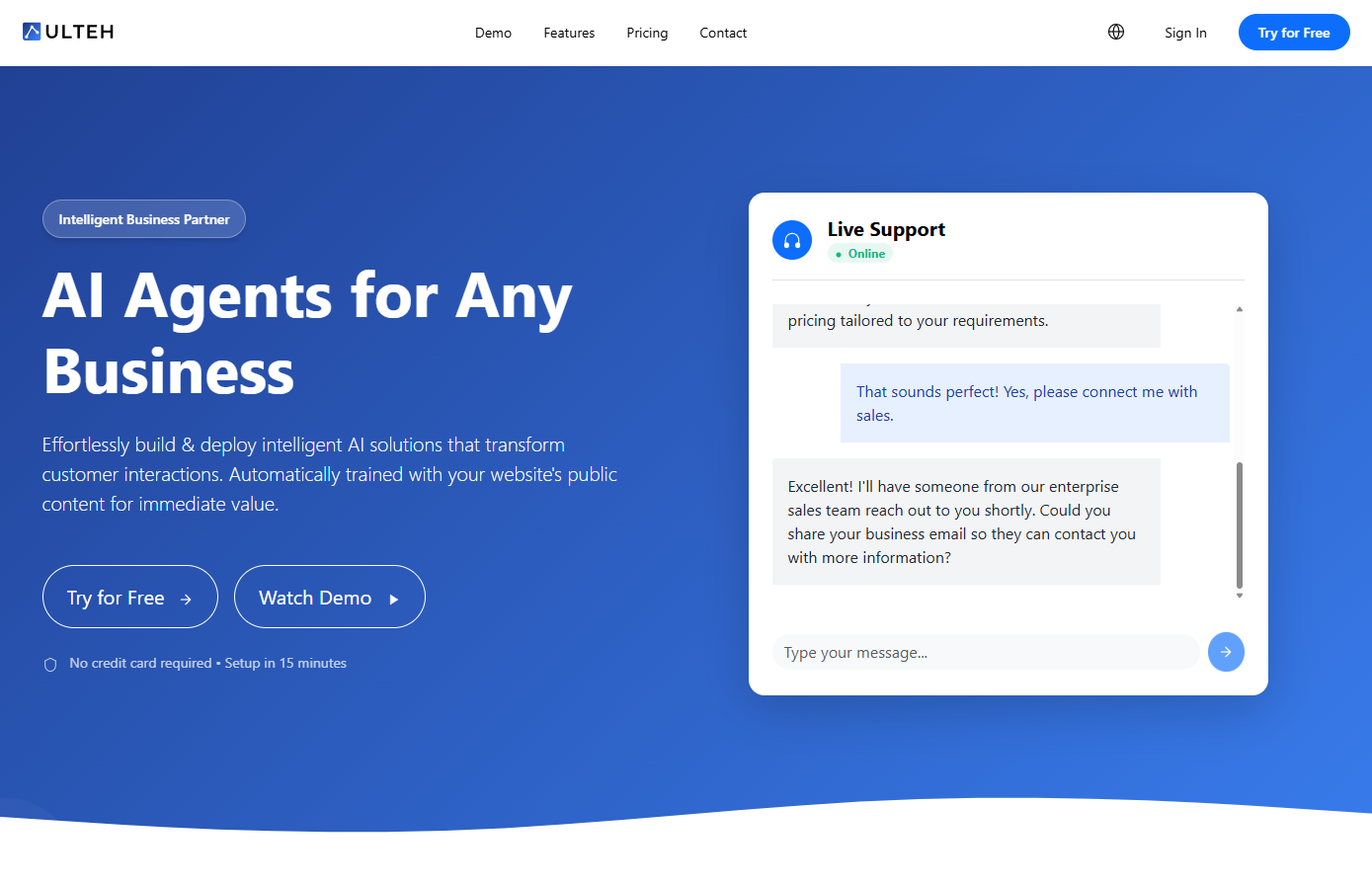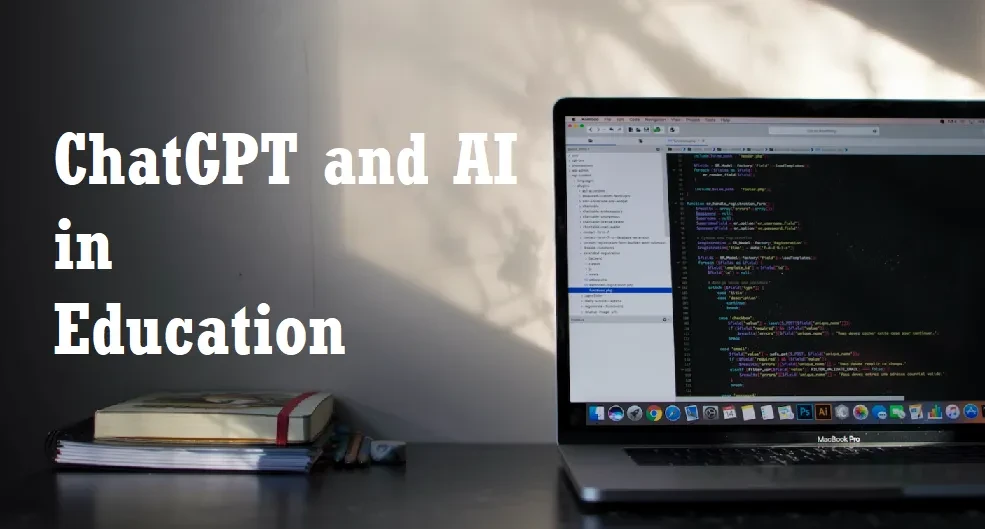Testi tehisintellekti OMA veebisaidil 60 sekundiga
Vaata, kuidas meie tehisintellekt analüüsib koheselt sinu veebisaiti ja loob personaliseeritud vestlusroboti - ilma registreerimiseta. Sisesta lihtsalt oma URL ja jälgi, kuidas see toimib!
Sissejuhatus: avatud lähtekoodiga tehisintellekti kuldajastu
Avatud lähtekoodiga AI-projektid on muutunud akadeemilistest uudishimudest tootmisvalmis tööriistadeks, mis toidavad rakendusi erinevates tööstusharudes. Nad on demokratiseerinud juurdepääsu tipptehnoloogiale, võimaldanud kohandamist, millele patenteeritud süsteemid ei sobi, ja loonud elavaid kogukondi, mis kiirendavad teadmiste jagamist ja innovatsiooni.
See artikkel uurib kümmet praegu kõige muljetavaldavamat avatud lähtekoodiga AI projekti. Need projektid paistavad silma mitte ainult oma tehniliste võimaluste, vaid ka mõju poolest tehisintellekti ökosüsteemile laiemalt, uuenduslike lähenemisviiside poolest keeruliste probleemide lahendamisel ja nende potentsiaaliga kujundada tehisintellekti arengu tulevikku.
Alates suurtest kommertspakkumistega konkureerivatest keelemudelitest kuni spetsiaalsete tööriistadeni, mis lahendavad konkreetseid probleeme märkimisväärse tõhususega, esindavad need projektid kogukonnapõhise tehisintellekti arendamise tipptasemel. Olenemata sellest, kas olete masinõppe uurija, rakenduste arendaja või lihtsalt huvitatud AI tehnoloogia tulevikust, need on projektid, mida tasub praegu vaadata.
1. Kallistavad näomuundurid: avatud lähtekoodiga tehisintellekti keskus
Miks see on murranguline
Transformersi teek ise on muljetavaldav – see pakub ühtset API-t tuhandete eelkoolitatud mudelitega töötamiseks. Kuid see, mis teeb Hugging Face'i tõeliselt revolutsiooniliseks, on selle laiem ökosüsteem:
Model Hub: Üle 150 000 vabalt kättesaadava eelkoolitatud mudeliga on Hubist saanud maailma suurim jagatud masinõppe mudelite hoidla, mis hõlmab keele-, nägemis-, heli- ja multimodaalseid rakendusi.
Andmestikud: Tuhanded kureeritud, versioonikontrollitud andmestikud mudelite treenimiseks ja hindamiseks, mis lahendavad ühe olulise takistuse tehisintellekti arendamisel.
Spaces: Taristu interaktiivsete masinõppe demode juurutamiseks, mis võimaldab kõigil esitleda avatud mudelitel põhinevaid töötavaid rakendusi.
Koostöölised töövood: Gitil põhinev versioonikontroll mudelite ja andmestike jaoks, mis muudab tehisintellekti projektides koostöö sama sujuvaks kui tarkvaraarendus.
Reaalse maailma mõju
Hugging Face'ist on saanud lugematute tehisintellekti süsteemide selgroog, alates idufirmadest kuni Fortune 500 ettevõteteni. Pakkudes terviklikku infrastruktuuri kogu masinõppe elutsükli jaoks, on see oluliselt vähendanud takistusi täiustatud tehisintellekti võimete rakendamisel.
Kogukonna aspekti ei saa üle tähtsustada – Hugging Face on loonud jagamis- ja koostöökultuuri, mis kiirendab tehisintellekti demokratiseerimist. Teadlased saavad jagada uusi arhitektuure, praktikud saavad leida oma kasutusjuhtumite jaoks spetsiaalseid mudeleid ja kõik saavad kasu ühistest teadmistest ja ressurssidest.
Hugging Face'i kaasasutaja Julien Chaumond rõhutab seda kogukonnakesksust: "Meie missioon on demokratiseerida head masinõpet. Kõigi panustamine ja üksteise tööle tuginemine on kiireim tee parema tehisintellekti saavutamiseks."
Märkimisväärsed omadused ja võimalused
AutoClassi liides: valib automaatselt optimaalse eelkoolitatud mudeli konkreetsete ülesannete jaoks, lihtsustades rakendamist.
Mudelikaardid: standardiseeritud dokumentatsioon, mis pakub läbipaistvust mudeli võimete, piirangute ja eelarvamuste kohta.
Optimum Library: tööriistad mudeli jõudluse optimeerimiseks erinevatel riistvaraplatvormidel. Hindamisraamistik: standardiseeritud võrdlusanalüüs mudeli toimivuse võrdlemiseks.
Hugging Face Transformers on näide sellest, kuidas avatud lähtekoodiga tarkvara saab tööstusharu põhjalikult muuta, luues jagatud infrastruktuuri, mis toob kasu kogu tehisintellekti ökosüsteemile.
2. LangChain: tehisintellekti rakenduste raamistiku loomine
Miks see on murranguline
LangChain pakub terviklikku raamistikku keelemudelitel põhinevate rakenduste arendamiseks, kõrvaldades kriitilise lõhe toores AI-võimaluste ja kasulike rakenduste vahel:
Komponeeritavad ahelad: paindlik arhitektuur mitme AI-võimaluse ühendamiseks sidusateks töövoogudeks.
Agendid: autonoomsete AI-süsteemide juurutamine, mis suudavad erinevaid tööriistu kutsudes arutleda, planeerida ja ülesandeid täita.
Mälusüsteemid: mitmesugused meetodid konteksti säilitamiseks vestlustes ja protsessides aja jooksul.
Retrieval-Augmented Generation: tööriistad keelemudelite maandamiseks konkreetsetes andmeallikates, parandades märkimisväärselt nende täpsust ja kasulikkust domeenispetsiifiliste rakenduste jaoks.
Tööriistakasutus: standardiseeritud liidesed AI-süsteemidele suhtlemiseks väliste rakenduste, andmebaaside ja API-dega.
Mõju tegelikule maailmale
LangChainist on saanud oluline infrastruktuur tuhandete tehisintellekti rakenduste jaoks, alates klienditeeninduse automatiseerimisest sisu genereerimise platvormide ja spetsiaalsete uurimistööriistadeni. Selle paindlik arhitektuur võimaldab arendajatel kiiresti prototüüpida ja keerulisi AI-rakendusi itereerida, mis muidu nõuaksid kuudepikkust kohandatud arendustööd.
Projekt näitab, kuidas avatud lähtekood kiirendab innovatsiooni – pakkudes standardiseeritud komponente tehisintellekti rakenduste arendamise tavapäraste mustrite jaoks, võimaldab LangChain arendajatel keskenduda unikaalsele väärtusele, mitte põhiinfrastruktuuri taastamisele.
LangChaini kaasasutaja Harrison Chase kirjeldab seda eetost: "Meie eesmärk on muuta 10 korda kiiremaks tehisintellekti rakenduste loomine, mis on tegelikult kasulikud. See tähendab kõigi ümbritsevate probleemide lahendamist – andmeallikatega ühenduse loomist, konteksti säilitamist, usaldusväärsete töövoogude teostamist – mitte ainult keelemudelitele API-kutsete tegemist."
Märkimisväärsed omadused ja võimalused
Dokumendilaadijad: eelehitatud konnektorid kümnete andmeallikate jaoks, alates PDF-idest kuni veebilehtede ja andmebaasideni.
Vektoripoed: semantiliste otsinguvõimaluste jaoks integreerimine vektorandmebaasidega.
Struktureeritud väljund: tööriistad struktureeritud andmete usaldusväärseks eraldamiseks struktureerimata tekstist.
Hindamisraamistik: meetodid rakenduse jõudluse testimiseks ja parandamiseks.
LangChain demonstreerib, kuidas avatud lähtekoodiga projektid võivad luua täiesti uusi kategooriaid ja muutuda kiiresti tärkava tehnoloogia jaoks kriitiliseks infrastruktuuriks.
3. LocalAI: tehisintellekti toomine teie riistvarasse
Miks see on murranguline
LocalAI pakub täielikku platvormi AI mudelite kohalikuks käitamiseks, mille arhitektuur seab esikohale juurdepääsetavuse ja praktilisuse:
API ühilduvus: rakendab OpenAI-ga ühilduvaid API-sid kohapeal, võimaldades arendajatel lülituda pilve- ja kohaliku juurutuse vahel ilma koodi muutmata.
Mudel Zoo: eelkonfigureeritud juurdepääs paljudele avatud mudelitele, alates keelemudelitest kuni pildigeneraatoriteni kuni helitöötluseni.
Riistvara optimeerimine: saadaoleval riistvaral põhinev automaatne konfiguratsioon, mis muudab mudelid tõhusaks töötamiseks kõigega alates mänguri sülearvutitest kuni spetsiaalsete servaseadmeteni.
Kvantimise tugi: sisseehitatud tööriistad mudelite tihendamiseks, et need töötaksid piiratud riistvaraga, säilitades samal ajal vastuvõetava jõudluse.
Privaatsus-kõigepealt disain: täielik andmete suveräänsus ilma välise suhtluseta, võimaldades kasutada juhtumeid, kus andmete privaatsus on kriitilise tähtsusega.
Mõju tegelikule maailmale
LocalAI on võimaldanud täiesti uusi rakenduste kategooriaid, kus pilvepõhine tehisintellekt oleks ebapraktiline, alates võrguühenduseta häälassistentidest kuni privaatsustundlike meditsiinirakendusteni kuni tööstussüsteemideni keskkondades, kus puudub usaldusväärne ühenduvus.
Arendajatele ja organisatsioonidele, kes on mures andmete privaatsuse või pilvekulude pärast, pakub LocalAI praktilist alternatiivi, mis säilitab enamiku võimalustest, lahendades samal ajal neid probleeme. See on eriti väärtuslik reguleeritud tööstusharudes, kus andmehaldusnõuded muudavad pilve-AI teenuste rakendamise keeruliseks.
LocalAI peamine panustaja Enrico Bergamini rõhutab seda fookust: "AI peaks olema juurdepääsetav kõigile, mitte ainult neile, kellel on tohutu pilveeelarve või spetsiaalne riistvara. Tõestame, et saate juba olemasoleva riistvaraga kasutada muljetavaldavaid AI-võimalusi."
Märkimisväärsed omadused ja võimalused
Konteineripõhine juurutamine: lihtne seadistamine Dockeri abil järjepidevaks juurutamiseks erinevates keskkondades.
Whisper API: kõne tekstiks muutmise võimalused, mis töötavad täielikult lokaalselt.
Stabiilne difusiooniintegratsioon: pildi loomine ilma väliste teenusteta.
Multimodaalne tugi: teksti-, pildi-, heli- ja videovõimalused ühtses süsteemis.
LocalAI näitab, kuidas avatud lähtekoodiga saab otseselt käsitleda kaubanduslike lähenemisviiside piiranguid, luues alternatiive, mis seavad prioriteediks erinevad kompromissid ja võimaldavad uusi kasutusjuhtumeid.
4. Ollama: kohaliku LLM-i juurutamise lihtsustamine
Miks see on murranguline
Ollama ühendab tehnilise keerukuse erakordse kasutatavusega, et muuta kohalik AI juurdepääsetavaks:
Üherealine installimine: alustamiseks on vaja ainult ühte käsku, ilma keeruka konfiguratsiooni või sõltuvusteta.
Mudeliteek: optimeeritud mudelite kureeritud kogu, millest igaühel on erinevad võimalused ja ressursinõuded.
Käsurea liides: lihtsad, intuitiivsed käsud mudelite allalaadimiseks ja vestluste alustamiseks.
API server: sisseehitatud API lõpp-punkt kohalike mudelite integreerimiseks rakendustesse ja töövoogudesse.
Mudelihaldus: lihtsad tööriistad mudelite allalaadimiseks, värskendamiseks ja eemaldamiseks.
Mõju tegelikule maailmale
Ollama on järsult laiendanud kohalike tehisintellekti mudelite vaatajaskonda, muutes need kättesaadavaks arendajatele, teadlastele ja entusiastidele, keda tehniline keerukus oleks muidu heidutanud. See on kiirendanud katsetamist ja kasutuselevõttu paljudes valdkondades.
Privaatsusteadlikele kasutajatele ja organisatsioonidele pakub Ollama praktilist võimalust uurida kaasaegseid tehisintellekti võimalusi ilma tundlikke andmeid välistele teenustele saatmata. Selle lihtsus on muutnud selle eriti populaarseks haridusasutustes, kus see võimaldab praktilist õppimist ilma pilvekontosid või spetsiaalset riistvara nõudmata.
Matt Schulte, Ollama kaastööline, selgitab seda keskendumist: "Tahtsime muuta kohaliku LLM-i käitamise sama lihtsaks kui mis tahes muu rakenduse installimise. Tehnoloogia on keeruline, kuid selle kasutamine ei tohiks olla."
Märkimisväärsed omadused ja võimalused
Mudeli kohandamine: tööriistad kohandatud parameetritega mudelite spetsiaalsete versioonide loomiseks.
Vestluse konteksti haldamine: säilitab konteksti loomulike interaktsioonide päringute vahel.
GPU kiirendus: saadaolevate GPU ressursside automaatne kasutamine jõudluse parandamiseks.
Multimodaalne tugi: laieneb tekstist kaugemale, et käsitleda pilte ja muid andmetüüpe.
Ollama näitlikustab põhimõtet, et tõeliselt transformatiivne tehnoloogia muutub nähtamatuks – muutes tipptasemel tehisintellekti võimalused tunduvad nagu mis tahes muu arvuti tööriist.
Testi tehisintellekti OMA veebisaidil 60 sekundiga
Vaata, kuidas meie tehisintellekt analüüsib koheselt sinu veebisaiti ja loob personaliseeritud vestlusroboti - ilma registreerimiseta. Sisesta lihtsalt oma URL ja jälgi, kuidas see toimib!
5. Mistral AI: uute standardite seadmine avatud mudelitele
Meta Description: Discover the most groundbreaking open source AI projects that are pushing boundaries, democratizing advanced technology, and creating new possibilities for developers worldwide.
Introduction: The Golden Age of Open Source AI
We're living in an unprecedented era for artificial intelligence development. While commercial AI solutions continue to make headlines, the open source community has become an extraordinary force driving innovation, accessibility, and transparency in AI technology. These community-driven projects are not just alternatives to proprietary systems—in many cases, they're pushing the boundaries of what's possible and setting new standards for the entire industry.
Open source AI projects have transformed from academic curiosities into production-ready tools powering applications across industries. They've democratized access to cutting-edge technology, enabled customization that proprietary systems can't match, and created vibrant communities that accelerate knowledge sharing and innovation.
This article explores ten of the most impressive open source AI projects right now. These projects stand out not just for their technical capabilities but for their impact on the broader AI ecosystem, their innovative approaches to solving complex problems, and their potential to shape the future of artificial intelligence development.
From large language models rivaling commercial offerings to specialized tools solving specific problems with remarkable efficiency, these projects represent the cutting edge of community-driven AI development. Whether you're a machine learning researcher, an application developer, or simply interested in the future of AI technology, these are the projects worth watching right now.
1. Hugging Face Transformers: The Open Source AI Hub
Hugging Face Transformers has evolved from a simple NLP library into what many consider the GitHub for machine learning—a comprehensive ecosystem that's fundamentally changing how AI models are developed, shared, and deployed.
Why It's Groundbreaking
The Transformers library itself is impressive enough—providing a unified API for working with thousands of pre-trained models. But what makes Hugging Face truly revolutionary is its broader ecosystem:
Model Hub: With over 150,000 freely available pre-trained models, the Hub has become the world's largest repository of shared machine learning models, spanning language, vision, audio, and multimodal applications.
Datasets: Thousands of curated, version-controlled datasets for training and evaluating models, addressing one of the most significant barriers to AI development.
Spaces: An infrastructure for deploying interactive machine learning demos, enabling anyone to showcase working applications built on open models.
Collaborative Workflows: Git-based version control for models and datasets, making collaboration on AI projects as streamlined as software development.
Real-World Impact
Hugging Face has become the backbone of countless production AI systems, from startups to Fortune 500 companies. By providing a comprehensive infrastructure for the entire machine learning lifecycle, it has dramatically reduced the barriers to implementing advanced AI capabilities.
The community aspect cannot be overstated—Hugging Face has created a culture of sharing and collaboration that's accelerating the democratization of AI. Researchers can share new architectures, practitioners can find specialized models for their use cases, and everyone benefits from the collective knowledge and resources.
Julien Chaumond, co-founder of Hugging Face, emphasizes this community focus: "Our mission is to democratize good machine learning. Having everyone contribute and build on each other's work is the fastest path to better AI."
Notable Features and Capabilities
AutoClass Interface: Automatically selects the optimal pre-trained model for specific tasks, simplifying implementation.
Model Cards: Standardized documentation that provides transparency about model capabilities, limitations, and biases.
Optimum Library: Tools for optimizing model performance across different hardware platforms.
Evaluation Harness: Standardized benchmarking to compare model performance.
Hugging Face Transformers exemplifies how open source can fundamentally transform an industry, creating a shared infrastructure that benefits the entire AI ecosystem.
2. LangChain: Building the Framework for AI Applications
LangChain emerged to solve a critical problem: while foundation models provide impressive capabilities, building practical applications with them requires significant additional infrastructure. In just over a year, it has become the de facto standard for developing LLM-powered applications.
Why It's Groundbreaking
LangChain provides a comprehensive framework for developing applications powered by language models, addressing the critical gap between raw AI capabilities and useful applications:
Composable Chains: A flexible architecture for combining multiple AI capabilities into coherent workflows.
Agents: Implementation of autonomous AI systems that can reason, plan, and execute tasks by calling different tools.
Memory Systems: Various methods for maintaining context in conversations and processes over time.
Retrieval-Augmented Generation: Tools for grounding language models in specific data sources, dramatically improving their accuracy and usefulness for domain-specific applications.
Tool Usage: Standardized interfaces for AI systems to interact with external applications, databases, and APIs.
Real-World Impact
LangChain has become essential infrastructure for thousands of AI applications, from customer service automation to content generation platforms to specialized research tools. Its flexible architecture allows developers to rapidly prototype and iterate on complex AI applications that would otherwise require months of custom development.
The project exemplifies how open source accelerates innovation—by providing standardized components for common patterns in AI application development, LangChain lets developers focus on unique value rather than rebuilding basic infrastructure.
Harrison Chase, co-founder of LangChain, describes this ethos: "Our goal is to make it 10x faster to build AI applications that are actually useful. That means solving all the surrounding problems—connecting to data sources, maintaining context, executing reliable workflows—not just making API calls to language models."
Notable Features and Capabilities
Document Loaders: Pre-built connectors for dozens of data sources, from PDFs to web pages to databases.
Vector Stores: Integrations with vector databases for semantic search capabilities.
Structured Output: Tools for reliably extracting structured data from unstructured text.
Evaluation Framework: Methods for testing and improving application performance.
LangChain demonstrates how open source projects can create entirely new categories and rapidly become critical infrastructure for an emerging technology.
3. LocalAI: Bringing AI to Your Hardware
LocalAI represents a powerful movement in AI development—bringing sophisticated models to local hardware without requiring cloud services or expensive specialized equipment.
Why It's Groundbreaking
LocalAI provides a complete platform for running AI models locally, with an architecture that prioritizes accessibility and practicality:
API Compatibility: Implements OpenAI-compatible APIs locally, allowing developers to switch between cloud and local deployment without code changes.
Model Zoo: Pre-configured access to a wide range of open models, from language models to image generators to audio processing.
Hardware Optimization: Automatic configuration based on available hardware, making models run efficiently on everything from gaming laptops to specialized edge devices.
Quantization Support: Built-in tools for compressing models to run on limited hardware while maintaining acceptable performance.
Privacy-First Design: Complete data sovereignty with no external communication, enabling use cases where data privacy is critical.
Real-World Impact
LocalAI has enabled entirely new categories of applications where cloud-based AI would be impractical, from offline voice assistants to privacy-sensitive medical applications to industrial systems in environments without reliable connectivity.
For developers and organizations concerned about data privacy or cloud costs, LocalAI provides a practical alternative that maintains most capabilities while addressing these concerns. It's particularly valuable in regulated industries where data governance requirements make cloud AI services challenging to implement.
Enrico Bergamini, a key contributor to LocalAI, highlights this focus: "AI should be accessible to everyone, not just those with massive cloud budgets or specialized hardware. We're proving that you can run impressive AI capabilities on the hardware you already have."
Notable Features and Capabilities
Container-Based Deployment: Simple setup using Docker for consistent deployment across environments.
Whisper API: Speech-to-text capabilities that run entirely locally.
Stable Diffusion Integration: Image generation without external services.
Multi-Modal Support: Text, image, audio, and video capabilities in a unified system.
LocalAI demonstrates how open source can directly address limitations of commercial approaches, creating alternatives that prioritize different trade-offs and enable new use cases.
4. Ollama: Simplifying Local LLM Deployment
While various projects focus on running large language models locally, Ollama stands out for making the process remarkably straightforward even for non-technical users.
Why It's Groundbreaking
Ollama combines technical sophistication with exceptional usability to make local AI accessible:
One-Line Installation: Getting started requires just a single command, with no complex configuration or dependencies.
Model Library: A curated collection of optimized models, each with different capability and resource requirement trade-offs.
Command-Line Interface: Simple, intuitive commands for downloading models and starting conversations.
API Server: Built-in API endpoint for integrating local models into applications and workflows.
Model Management: Straightforward tools for downloading, updating, and removing models.
Real-World Impact
Ollama has dramatically expanded the audience for local AI models, making them accessible to developers, researchers, and enthusiasts who might otherwise have been deterred by technical complexity. This has accelerated experimentation and adoption across numerous domains.
For privacy-conscious users and organizations, Ollama provides a practical way to explore modern AI capabilities without sending sensitive data to external services. Its simplicity has made it particularly popular in educational settings, where it enables hands-on learning without requiring cloud accounts or specialized hardware.
Matt Schulte, Ollama contributor, explains this focus: "We wanted to make running a local LLM as simple as installing any other application. The technology is complex, but using it shouldn't be."
Notable Features and Capabilities
Model Customization: Tools for creating specialized versions of models with custom parameters.
Conversation Context Management: Maintains context between queries for natural interactions.
GPU Acceleration: Automatic utilization of available GPU resources for improved performance.
Multimodal Support: Expanding beyond text to handle images and other data types.
Ollama exemplifies the principle that truly transformative technology becomes invisible—making cutting-edge AI capabilities feel like any other tool on your computer.
5. Mistral AI: Setting New Standards for Open Models
Mistral AI burst onto the scene with models that challenge the conventional wisdom about the relationship between model size and capability, demonstrating that thoughtful architecture and training approaches can create remarkably powerful open models.
Why It's Groundbreaking
Mistral's approach combines architectural innovation with a commitment to open release:
Efficiency-First Design: Models that achieve remarkable performance with significantly fewer parameters than competitors.
Specialized Instruct Models: Versions specifically tuned for following instructions accurately, rivaling much larger closed-source models.
Sparse Mixture of Experts: Advanced architectures that dynamically activate different parts of the model based on input, dramatically improving efficiency.
Permissive Licensing: Models released under Apache 2.0, allowing both research and commercial applications without restrictions.
Multimodal Capabilities: Expanding beyond text to handle images and structured data inputs.
Real-World Impact
Mistral's models have enabled numerous applications and services that would otherwise have required proprietary models with restrictive licensing and higher resource requirements. Their combination of performance and efficiency has made sophisticated AI capabilities accessible to organizations with limited computational resources.
The permissive licensing and open weights have facilitated extensive research and customization, with hundreds of specialized adaptations created by the community for specific domains and languages. This has particularly benefited languages and use cases that receive less attention from commercial providers.
Arthur Mensch, CEO of Mistral AI, emphasizes this approach: "We believe in creating technology that's both state-of-the-art and genuinely open. Our models aren't just open in name—they're designed to be studied, modified, and deployed without restrictions."
Notable Features and Capabilities
Context Length Scaling: Models that efficiently handle very long contexts without performance degradation.
Code Generation: Strong capabilities for programming tasks across multiple languages.
Reasoning Abilities: Sophisticated logical reasoning comparable to much larger models.
Multi-Language Support: Strong performance across numerous languages beyond English.
Mistral demonstrates how open source innovation can challenge dominant commercial approaches, creating alternatives that prioritize different values and performance characteristics.
6. GGUF-ökosüsteem: mudeli kasutuselevõtu demokratiseerimine
Meta Description: Discover the most groundbreaking open source AI projects that are pushing boundaries, democratizing advanced technology, and creating new possibilities for developers worldwide.
Introduction: The Golden Age of Open Source AI
We're living in an unprecedented era for artificial intelligence development. While commercial AI solutions continue to make headlines, the open source community has become an extraordinary force driving innovation, accessibility, and transparency in AI technology. These community-driven projects are not just alternatives to proprietary systems—in many cases, they're pushing the boundaries of what's possible and setting new standards for the entire industry.
Open source AI projects have transformed from academic curiosities into production-ready tools powering applications across industries. They've democratized access to cutting-edge technology, enabled customization that proprietary systems can't match, and created vibrant communities that accelerate knowledge sharing and innovation.
This article explores ten of the most impressive open source AI projects right now. These projects stand out not just for their technical capabilities but for their impact on the broader AI ecosystem, their innovative approaches to solving complex problems, and their potential to shape the future of artificial intelligence development.
From large language models rivaling commercial offerings to specialized tools solving specific problems with remarkable efficiency, these projects represent the cutting edge of community-driven AI development. Whether you're a machine learning researcher, an application developer, or simply interested in the future of AI technology, these are the projects worth watching right now.
1. Hugging Face Transformers: The Open Source AI Hub
Hugging Face Transformers has evolved from a simple NLP library into what many consider the GitHub for machine learning—a comprehensive ecosystem that's fundamentally changing how AI models are developed, shared, and deployed.
Why It's Groundbreaking
The Transformers library itself is impressive enough—providing a unified API for working with thousands of pre-trained models. But what makes Hugging Face truly revolutionary is its broader ecosystem:
Model Hub: With over 150,000 freely available pre-trained models, the Hub has become the world's largest repository of shared machine learning models, spanning language, vision, audio, and multimodal applications.
Datasets: Thousands of curated, version-controlled datasets for training and evaluating models, addressing one of the most significant barriers to AI development.
Spaces: An infrastructure for deploying interactive machine learning demos, enabling anyone to showcase working applications built on open models.
Collaborative Workflows: Git-based version control for models and datasets, making collaboration on AI projects as streamlined as software development.
Real-World Impact
Hugging Face has become the backbone of countless production AI systems, from startups to Fortune 500 companies. By providing a comprehensive infrastructure for the entire machine learning lifecycle, it has dramatically reduced the barriers to implementing advanced AI capabilities.
The community aspect cannot be overstated—Hugging Face has created a culture of sharing and collaboration that's accelerating the democratization of AI. Researchers can share new architectures, practitioners can find specialized models for their use cases, and everyone benefits from the collective knowledge and resources.
Julien Chaumond, co-founder of Hugging Face, emphasizes this community focus: "Our mission is to democratize good machine learning. Having everyone contribute and build on each other's work is the fastest path to better AI."
Notable Features and Capabilities
AutoClass Interface: Automatically selects the optimal pre-trained model for specific tasks, simplifying implementation.
Model Cards: Standardized documentation that provides transparency about model capabilities, limitations, and biases.
Optimum Library: Tools for optimizing model performance across different hardware platforms.
Evaluation Harness: Standardized benchmarking to compare model performance.
Hugging Face Transformers exemplifies how open source can fundamentally transform an industry, creating a shared infrastructure that benefits the entire AI ecosystem.
2. LangChain: Building the Framework for AI Applications
LangChain emerged to solve a critical problem: while foundation models provide impressive capabilities, building practical applications with them requires significant additional infrastructure. In just over a year, it has become the de facto standard for developing LLM-powered applications.
Why It's Groundbreaking
LangChain provides a comprehensive framework for developing applications powered by language models, addressing the critical gap between raw AI capabilities and useful applications:
Composable Chains: A flexible architecture for combining multiple AI capabilities into coherent workflows.
Agents: Implementation of autonomous AI systems that can reason, plan, and execute tasks by calling different tools.
Memory Systems: Various methods for maintaining context in conversations and processes over time.
Retrieval-Augmented Generation: Tools for grounding language models in specific data sources, dramatically improving their accuracy and usefulness for domain-specific applications.
Tool Usage: Standardized interfaces for AI systems to interact with external applications, databases, and APIs.
Real-World Impact
LangChain has become essential infrastructure for thousands of AI applications, from customer service automation to content generation platforms to specialized research tools. Its flexible architecture allows developers to rapidly prototype and iterate on complex AI applications that would otherwise require months of custom development.
The project exemplifies how open source accelerates innovation—by providing standardized components for common patterns in AI application development, LangChain lets developers focus on unique value rather than rebuilding basic infrastructure.
Harrison Chase, co-founder of LangChain, describes this ethos: "Our goal is to make it 10x faster to build AI applications that are actually useful. That means solving all the surrounding problems—connecting to data sources, maintaining context, executing reliable workflows—not just making API calls to language models."
Notable Features and Capabilities
Document Loaders: Pre-built connectors for dozens of data sources, from PDFs to web pages to databases.
Vector Stores: Integrations with vector databases for semantic search capabilities.
Structured Output: Tools for reliably extracting structured data from unstructured text.
Evaluation Framework: Methods for testing and improving application performance.
LangChain demonstrates how open source projects can create entirely new categories and rapidly become critical infrastructure for an emerging technology.
3. LocalAI: Bringing AI to Your Hardware
LocalAI represents a powerful movement in AI development—bringing sophisticated models to local hardware without requiring cloud services or expensive specialized equipment.
Why It's Groundbreaking
LocalAI provides a complete platform for running AI models locally, with an architecture that prioritizes accessibility and practicality:
API Compatibility: Implements OpenAI-compatible APIs locally, allowing developers to switch between cloud and local deployment without code changes.
Model Zoo: Pre-configured access to a wide range of open models, from language models to image generators to audio processing.
Hardware Optimization: Automatic configuration based on available hardware, making models run efficiently on everything from gaming laptops to specialized edge devices.
Quantization Support: Built-in tools for compressing models to run on limited hardware while maintaining acceptable performance.
Privacy-First Design: Complete data sovereignty with no external communication, enabling use cases where data privacy is critical.
Real-World Impact
LocalAI has enabled entirely new categories of applications where cloud-based AI would be impractical, from offline voice assistants to privacy-sensitive medical applications to industrial systems in environments without reliable connectivity.
For developers and organizations concerned about data privacy or cloud costs, LocalAI provides a practical alternative that maintains most capabilities while addressing these concerns. It's particularly valuable in regulated industries where data governance requirements make cloud AI services challenging to implement.
Enrico Bergamini, a key contributor to LocalAI, highlights this focus: "AI should be accessible to everyone, not just those with massive cloud budgets or specialized hardware. We're proving that you can run impressive AI capabilities on the hardware you already have."
Notable Features and Capabilities
Container-Based Deployment: Simple setup using Docker for consistent deployment across environments.
Whisper API: Speech-to-text capabilities that run entirely locally.
Stable Diffusion Integration: Image generation without external services.
Multi-Modal Support: Text, image, audio, and video capabilities in a unified system.
LocalAI demonstrates how open source can directly address limitations of commercial approaches, creating alternatives that prioritize different trade-offs and enable new use cases.
4. Ollama: Simplifying Local LLM Deployment
While various projects focus on running large language models locally, Ollama stands out for making the process remarkably straightforward even for non-technical users.
Why It's Groundbreaking
Ollama combines technical sophistication with exceptional usability to make local AI accessible:
One-Line Installation: Getting started requires just a single command, with no complex configuration or dependencies.
Model Library: A curated collection of optimized models, each with different capability and resource requirement trade-offs.
Command-Line Interface: Simple, intuitive commands for downloading models and starting conversations.
API Server: Built-in API endpoint for integrating local models into applications and workflows.
Model Management: Straightforward tools for downloading, updating, and removing models.
Real-World Impact
Ollama has dramatically expanded the audience for local AI models, making them accessible to developers, researchers, and enthusiasts who might otherwise have been deterred by technical complexity. This has accelerated experimentation and adoption across numerous domains.
For privacy-conscious users and organizations, Ollama provides a practical way to explore modern AI capabilities without sending sensitive data to external services. Its simplicity has made it particularly popular in educational settings, where it enables hands-on learning without requiring cloud accounts or specialized hardware.
Matt Schulte, Ollama contributor, explains this focus: "We wanted to make running a local LLM as simple as installing any other application. The technology is complex, but using it shouldn't be."
Notable Features and Capabilities
Model Customization: Tools for creating specialized versions of models with custom parameters.
Conversation Context Management: Maintains context between queries for natural interactions.
GPU Acceleration: Automatic utilization of available GPU resources for improved performance.
Multimodal Support: Expanding beyond text to handle images and other data types.
Ollama exemplifies the principle that truly transformative technology becomes invisible—making cutting-edge AI capabilities feel like any other tool on your computer.
5. Mistral AI: Setting New Standards for Open Models
Mistral AI burst onto the scene with models that challenge the conventional wisdom about the relationship between model size and capability, demonstrating that thoughtful architecture and training approaches can create remarkably powerful open models.
Why It's Groundbreaking
Mistral's approach combines architectural innovation with a commitment to open release:
Efficiency-First Design: Models that achieve remarkable performance with significantly fewer parameters than competitors.
Specialized Instruct Models: Versions specifically tuned for following instructions accurately, rivaling much larger closed-source models.
Sparse Mixture of Experts: Advanced architectures that dynamically activate different parts of the model based on input, dramatically improving efficiency.
Permissive Licensing: Models released under Apache 2.0, allowing both research and commercial applications without restrictions.
Multimodal Capabilities: Expanding beyond text to handle images and structured data inputs.
Real-World Impact
Mistral's models have enabled numerous applications and services that would otherwise have required proprietary models with restrictive licensing and higher resource requirements. Their combination of performance and efficiency has made sophisticated AI capabilities accessible to organizations with limited computational resources.
The permissive licensing and open weights have facilitated extensive research and customization, with hundreds of specialized adaptations created by the community for specific domains and languages. This has particularly benefited languages and use cases that receive less attention from commercial providers.
Arthur Mensch, CEO of Mistral AI, emphasizes this approach: "We believe in creating technology that's both state-of-the-art and genuinely open. Our models aren't just open in name—they're designed to be studied, modified, and deployed without restrictions."
Notable Features and Capabilities
Context Length Scaling: Models that efficiently handle very long contexts without performance degradation.
Code Generation: Strong capabilities for programming tasks across multiple languages.
Reasoning Abilities: Sophisticated logical reasoning comparable to much larger models.
Multi-Language Support: Strong performance across numerous languages beyond English.
Mistral demonstrates how open source innovation can challenge dominant commercial approaches, creating alternatives that prioritize different values and performance characteristics.
6. GGUF Ecosystem: Democratizing Model Deployment
The GGUF (GPT-Generated Unified Format) ecosystem has emerged as a critical infrastructure for making large language models practically deployable across a wide range of hardware.
Why It's Groundbreaking
The GGUF ecosystem addresses the practical challenges of running sophisticated models on available hardware:
Model Quantization: Techniques for compressing models to a fraction of their original size while maintaining acceptable performance.
Format Standardization: A common format enabling interoperability between different frameworks and tools.
Hardware Optimization: Automatic adaptation to available computing resources, from high-end GPUs to basic CPUs.
Inference Engines: Highly optimized runtime environments for model execution.
Community Collaboration: A vibrant ecosystem of tools and resources created by contributors worldwide.
Real-World Impact
GGUF has enabled AI capabilities in contexts where they would otherwise be impossible, from offline deployments to resource-constrained environments to air-gapped systems. This has dramatically expanded the reach of AI technology beyond well-resourced cloud environments.
For developers, the ecosystem provides practical options for deploying models without excessive infrastructure costs. For end-users, it enables applications that work without internet connectivity or with strict privacy requirements. This has been particularly valuable in fields like healthcare, where data privacy concerns often limit cloud AI adoption.
Georgi Gerganov, a key contributor to the ecosystem, notes: "Making these models run efficiently on commodity hardware isn't just an engineering challenge—it's about ensuring AI technology is accessible to everyone, not just those with access to data centers."
Notable Features and Capabilities
llama.cpp: Ultra-efficient inference engine for running LLMs on various hardware.
Compatibility Layers: Tools for converting between different model formats.
Automatic Mixed Precision: Dynamic adjustment of calculation precision for optimal performance.
Server Implementations: Ready-to-use servers for exposing models through standardized APIs.
The GGUF ecosystem demonstrates how focused open source efforts can solve practical problems that might be overlooked by larger commercial projects focused on pushing theoretical capabilities.
7. Sosin: helibarjääride purustamine
Miks see on murranguline
Whisper on kõnetuvastustehnoloogia põhiline edusamm:
Mitmekeelsed võimalused: tugev jõudlus 99 keeles ilma keelepõhise koolituseta.
Vastupidavus: erakordne jõudlus mürarikastes reaalsetes tingimustes, kus paljud kõnetuvastussüsteemid on hädas.
Zero-Shot Translation: Võimalus tõlkida kõnet otse ühest keelest inglise keelde ilma spetsiaalse tõlkekoolituseta.
Avatud kaalud ja rakendamine: MIT-i lubatud litsentsi alusel välja antud täielikud mudelikaalud ja kood.
Mõistlikud ressursinõuded: suudab tõhusalt töötada tagasihoidliku riistvaraga, eriti kogukonna optimeerimisega.
Mõju tegelikule maailmale
Whisper on võimaldanud laine rakendusi, mis muudavad helisisu juurdepääsetavamaks, alates taskuhäälingusaadete transkriptsioonitööriistadest kuni reaalajas subtiitrite süsteemide ja keeleõppe rakendusteni. Selle mitmekeelsed võimalused on olnud eriti väärtuslikud alateenindusega keelte jaoks, millel varem puudusid praktilised kõnetuvastusvõimalused.
Teadlastele ja arendajatele pakub Whisper tugeva aluse kõnetoega rakenduste loomiseks, ilma et oleks vaja eriteadmisi helitöötluses või juurdepääsu tohututele koolitusandmetele. See on kiirendanud innovatsiooni kõneliidestes ja helianalüüsis paljudes valdkondades.
Üks Whisperi loojatest Alec Radford selgitab: "Avatud lähtekoodiga Whisperi abil püüdsime teha jõulise kõnetuvastuse kõigi tehnoloogiat loovate inimeste jaoks ehitusplokina kättesaadavaks. Kogukond on võtnud selle aluse ja loonud uskumatu hulga rakendusi, mida me ei osanud oodata."
Märkimisväärsed omadused ja võimalused
Ajatempli ennustus: täpne sõnataseme ajastusteave transkriptsioonide sünkroonimiseks heliga.
Kõneleja diariseerimine: kogukonna laiendused erinevate kõnelejate tuvastamiseks vestlustes.
Optimeeritud juurutused: kogukonna väljatöötatud versioonid, mis on optimeeritud erinevate juurutusstsenaariumide jaoks.
Peenhäälestustööriistad: meetodid mudeli kohandamiseks konkreetsete domeenide või aktsentidega.
Whisper demonstreerib, kuidas läbimurdesüsteemide avatud lähtekoodiga väljaanded võivad innovatsiooni kiiresti kiirendada kogu valdkonnas.
8. Stabiilsus AI avatud mudelid: visuaalse loomise ümberkujundamine
Miks see on murranguline
Stabiilsuse lähenemisviis ühendab tehnilise uuenduse põhimõttelise avatud väljalaskega:
Stabiilne hajutamine: avatud kujutise genereerimise mudelite perekond, mis töötavad tõhusalt tarbijariistvaraga.
Spetsialiseeritud mudelid: domeenispetsiifilised mudelid selliste valdkondade jaoks nagu 3D genereerimine, animatsioon ja kõrge eraldusvõimega kujutised.
Lubav litsentsimine: Creative ML OpenRAIL-M litsentsi alusel välja antud mudelid, mis võimaldavad nii uurimistööd kui ka ärilist kasutamist.
Kasutussõbralik disain: arhitektuur, mis on loodud nii, et see oleks praktiline reaalsete rakenduste jaoks, mitte ainult teadusuuringute demonstreerimiseks.
Kogukonna kaasarendus: aktiivne koostöö laiema AI kogukonnaga mudelite täiustamise ja rakenduste osas.
Mõju tegelikule maailmale
Stabiilsuse avatud mudelid on võimaldanud plahvatuslikult suurendada loovust ja rakenduste arendamist, mis suletud litsentsirežiimide korral oleks olnud võimatu. Alates kunsti loomise platvormidest kuni disainitööriistade ja meediatootmise töövoogudeni on need mudelid integreeritud tuhandetesse rakendustesse, mis teenindavad miljoneid kasutajaid.
Loojate jaoks pakuvad mudelid uusi visuaalse väljenduse tööriistu ilma kunstilist ettevalmistust nõudmata. Arendajatele pakuvad nad ehitusplokke spetsiaalsete rakenduste loomiseks ilma suletud API-de piirangute ja kuludeta. See on olnud eriti väärtuslik väikeettevõtete ja üksikute loojate jaoks, kes muidu ei saaks sellisele tehnoloogiale juurde pääseda.
Stabiilsuse AI asutaja Emad Mostaque rõhutab seda filosoofiat: "Usume avatud mudelitesse, sest need võimaldavad innovatsiooni, mida me ei oska ennustada. Kui lukustate tehnoloogia API-de taha, piirate inimeste ehitamist sellega, mida nad eeldatavalt vajavad."
Märkimisväärsed omadused ja võimalused
ControlNeti laiendused: piltide genereerimise täpne juhtimine võrdluspiltide või visandite abil.
SDXL-mudelid: kõrge eraldusvõimega kujutiste genereerimine täiustatud kvaliteedi ja detailidega.
Järjepidevuse mudelid: kiirem genereerimine uuenduslike difusioonitehnikate abil.
Spetsiaalsed kohandused: kogukonna loodud variatsioonid konkreetsete kunstistiilide ja valdkondade jaoks.
Stabiilsus AI avatud lähenemisviis näitab, kuidas kõrgtehnoloogiale juurdepääsu demokratiseerimine võib vabastada loovuse ja innovatsiooni globaalses mastaabis.
9. ImageBind: mitmeliigilise mõistmise sildamine
Why It's Groundbreaking
ImageBind addresses the fundamental challenge of creating unified representations across modalities:
Unified Embedding Space: Creates consistent representations across six modalities—images, text, audio, depth, thermal, and IMU data.
Zero-Shot Transfer: Capabilities learned in one modality transfer to others without explicit training.
Emergent Capabilities: Demonstrates capabilities not explicitly trained for, like audio-to-image retrieval.
Efficient Architecture: Designed for practical deployment rather than just research demonstration.
Compositional Understanding: Ability to understand relationships between different modalities in a unified framework.
Real-World Impact
ImageBind has enabled new classes of applications that understand correlations between different types of data, from more natural multimodal search engines to systems that can generate appropriate audio for images or create visualizations from sound.
For researchers, the project provides new ways to investigate how different modalities relate to one another. For developers, it offers practical tools for building systems that can work with multiple types of input and output in a coherent way. This has been particularly valuable for accessibility applications that need to translate between modalities.
Christopher Pal, a researcher in multimodal AI, notes: "ImageBind represents a fundamental advance in how AI systems understand different types of data. By creating a unified representation space, it enables connections between modalities that previously required specific training for each relationship."
Notable Features and Capabilities
Cross-Modal Retrieval: Find related content across different data types.
Unified Embeddings: Represent diverse data in a consistent mathematical space.
Flexible Integration: Architecture designed to work with existing systems.
Compositional Generation: Create content in one modality based on input from another.
ImageBind demonstrates how open source can accelerate research in emerging areas by providing building blocks for the community to explore new possibilities.
10. XTuner: Democratizing Model Customization
XTuner has emerged as a leading solution for fine-tuning large language models, making model customization accessible to a much wider audience of developers and organizations.
Why It's Groundbreaking
XTuner addresses the critical challenge of adapting foundation models to specific needs:
Resource Efficiency: Makes fine-tuning possible on consumer hardware through optimized training techniques.
Unified Framework: Supports multiple model architectures and fine-tuning methods in a consistent interface.
Parameter-Efficient Methods: Implements techniques like LoRA and QLoRA that update only a small fraction of model parameters.
Reproducible Workflows: Structured approach to creating, managing, and deploying fine-tuned models.
Evaluation Framework: Built-in tools for assessing model performance and improvements.
Real-World Impact
XTuner has enabled thousands of organizations to create customized AI models tailored to their specific domains, terminology, and use cases. This has been particularly valuable for specialized industries and applications where general models lack the necessary domain knowledge or terminology.
For developers without extensive machine learning expertise, XTuner provides accessible tools for adapting advanced models to specific requirements. For smaller organizations, it offers a path to customized AI capabilities without the computational resources typically required for full model training.
Li Yuanqing, an XTuner contributor, explains: "Fine-tuning is where theory meets practice for most AI applications. By making this process more accessible, we're helping organizations create models that actually understand their specific domains and problems."
Notable Features and Capabilities
Adapter Management: Tools for creating, storing, and switching between different fine-tuned adaptations.
Quantized Training: Methods for training at reduced precision to improve efficiency.
Template System: Structured approach to creating training data and instructions.
Deployment Integration: Streamlined path from fine-tuning to production deployment.
XTuner demonstrates how focused open source tools can democratize access to advanced AI customization capabilities that would otherwise remain limited to well-resourced technical teams.
Conclusion: The Collective Power of Open Source AI
These ten projects represent different facets of a broader revolution in AI development—one driven by open collaboration, shared resources, and democratic access to cutting-edge technology. Together, they're creating an infrastructure for AI innovation that exists alongside commercial systems, often complementing them while addressing different priorities and use cases.
The open source AI ecosystem offers several unique advantages:
Transparency and Trust: Open code and models allow for inspection, understanding, and verification that's impossible with closed systems.
Adaptability: The ability to modify and extend projects creates possibilities for customization that API-only access cannot match.
Community Knowledge: Shared problems and solutions accelerate learning and innovation across the entire ecosystem.
Democratized Access: Lower barriers to entry enable participation from researchers and developers worldwide, regardless of institutional affiliation.
Collaborative Progress: Each project builds on the foundations established by others, creating cumulative advancement.
These projects are not just technical achievements but represent a different approach to technology development—one that prioritizes accessibility, community contribution, and shared progress. While commercial AI systems will continue to play an important role, the open source ecosystem provides critical balance in the AI landscape, ensuring that advanced capabilities remain available to all.
As these projects continue to evolve and new ones emerge, they're creating a foundation for AI development that emphasizes human values, diverse participation, and collective advancement—principles that will be increasingly important as AI capabilities continue to grow in power and impact.
What open source AI projects do you find most impressive? Are there others you think deserve recognition? Share your thoughts in the comments below.
